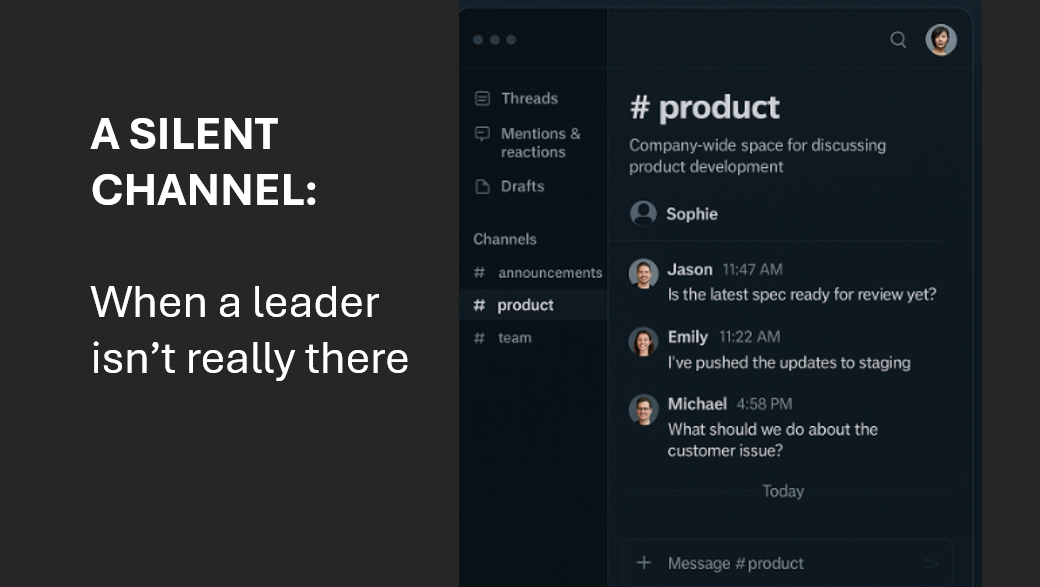Here’s a statistic that might surprise you: only 15% of teams ever achieve high performance. It’s a staggeringly low number, so why are so few teams actually reaching their full potential?
The answer isn’t simple, but it starts with understanding that high performance isn’t just about hitting teams hitting their targets, it’s about how they hit them.
Leaders need to shift their focus from just working in the team to working on the team, building the foundations that make sustained excellence possible.
What Makes a Team Truly High-Performing?
Before diving into solutions, let’s clarify what we mean by high performance. Too often, we confuse busyness with performance. A team that consistently delivers results while burning out its members isn’t high-performing, it’s just pushing through regardless of its effect on the individuals.
High-performing teams deliver exceptional results in a way that builds capability, trust, and engagement. They’re characterised by:
- Clear alignment around mission, purpose, and values.
- High trust and psychological safety.
- Distributed leadership where team members step up across different areas.
- Continuous learning and adaptation.
- Strong cohesion and interconnectedness.
The key insight? The ‘how’ is just as important as the ‘what’. You need exceptional results and an exceptional way of working to truly qualify as high-performing.
Why High Performance Is So Elusive
So why do so few teams reach this standard? The reality is that building high-performing teams is genuinely difficult work. Most leaders are given a team and expected to make it high-performing without any real training or support.
Organisations invest heavily in the development of technical skills and the leadership capabilities of individuals, but there’s often surprisingly little focus on the specific skills needed to develop teams. It’s like expecting someone to conduct an orchestra without ever learning about musical dynamics, timing, or how different instruments play harmoniously together.
The challenge is compounded by the fact that high performance isn’t a destination, it’s an ongoing journey that requires sustained attention and effort.
Research suggests it takes six to eight months of concerted effort to move a team toward high performance, and that’s just the beginning.
The Leader’s Role: From Controller to Enabler
One of the most powerful things a leader can do is distribute leadership across the team. This doesn’t mean abdication, it means strategically sharing leadership roles based on where each person’s talents and skills naturally lie.
When you distribute leadership, you accomplish several things:
- You demonstrate trust in your team members.
- You access multiple sources of capability rather than having everything flow through you.
- You develop your team’s leadership muscles.
- You create more ownership and engagement.
Step over your ego and need for status and ask yourself: “Who do I have in my team? Do I have the right people in the right seats? How can I draw them into leading the ‘how’ work as well as delivering output?”
Building the Foundation: Alignment and Trust
The Alignment Imperative
Here’s a simple test: if you asked each person on your team to describe your mission, purpose, and values, would they all give similar answers? The more coherent and cohesive their responses, the better your chances of achieving high performance.
Think of it like a golf swing. When the club face hits the ball square, it travels 200 yards to the target. But if the club face is off by just a few degrees, the ball lands nowhere near where you want it. The same principle applies to team alignment; small misalignments can create massively diffused efforts.
Trust: The Non-Negotiable Foundation
Trust improves with deeper relationships, and deeper relationships require intentional cultivation. This is especially challenging in virtual or hybrid teams where those natural relationship-building moments don’t happen organically.
Signs that trust may be lacking in your team include decisions that are made in meetings being undermined by side conversations, gossip and behind-the-scenes negativity, and people filling in information gaps with worst-case scenarios. Another sign would be low levels of commitment and accountability.
The good news? You can accelerate trust-building through structured activities that help people get to know each other as human beings, not just job functions.
The Virtual Team Challenge
Virtual and hybrid teams face unique obstacles in building high performance. Those water cooler moments, casual collaborations, and informal relationship-building opportunities have to be manufactured where they would have traditionally happened naturally.
Successful virtual teams require:
- Intentional social connection time built into regular meetings.
- Clear communication norms for tools like Slack or Teams.
- Regular in-person touchpoints when possible.
- Structured opportunities for informal interaction.
- Extra attention to psychological safety and inclusion.
Don’t underestimate the power of that ‘extra’ time at the beginning of virtual meetings for personal connection. It might feel inefficient, but it’s essential infrastructure for high performance.
The Power of Team Reflexivity
One of the strongest predictors of high performance is team reflexivity – the ability of a team to reflect on how it’s working together. This isn’t just about reviewing what you accomplished, but examining how you accomplished it.
Build regular reflection into your team rhythm by reserving time in weekly meetings for process reflection and conducting quarterly reviews of team dynamics. You can also create safe spaces for honest feedback about team functioning and address issues proactively rather than letting them fester.
Remember, high performance erodes quickly without attention. What takes months to build can be lost in weeks without the right maintenance.
Actionable Takeaways: What You Can Do To Make Progress Today
1. Co-Create Your High-Performance Vision
At your next team meeting, ask everyone: “What’s the highest performing team you’ve ever been on? What made it special?” Use their answers to co-create your team’s high-performance culture rather than imposing your vision.
2. Assess Your Current State
Use a framework like Google’s Project Aristotle (psychological safety, clarity, dependability, etc.) to evaluate where your team stands today. Have everyone assess the team across these dimensions and discuss gaps openly.
3. Manufacture Social Connection
Create regular opportunities for informal interaction, especially for virtual teams:
- Start meetings with personal check-ins
- Schedule optional ‘coffee chat’ sessions
- Create dedicated channels for non-work conversation
- Plan periodic in-person gatherings when possible
4. Distribute Leadership Strategically
Identify opportunities to share leadership based on team members’ strengths:
- Who could lead the next project review?
- Who has expertise that others could benefit from?
- What aspects of team development could others champion?
5. Build Reflection into Your Rhythm
Make team reflexivity a regular practice:
- End meetings with “How did we do as a team today?”
- Conduct monthly team health checks
- Create anonymous feedback mechanisms
- Address cultural issues as seriously as operational ones
The Long Game
Building high-performing teams isn’t about quick fixes or magic bullets. It’s about sustained, intentional effort focused both on the ‘what’ and the ‘how’ of team performance. It requires leaders who are willing to work on the team as much as they work in the team.
The 15% statistic doesn’t have to be your ceiling, it can be your inspiration. With the right focus, tools, and commitment, your team can join that elite group. The question isn’t whether it’s possible, but whether you’re willing to do the work to make it happen.
The investment is significant, but so is the payoff. High-performing teams don’t just deliver better results, they create better experiences for everyone involved. They build capability, resilience and engagement that extends far beyond any single project or quarter.
Your team has the potential for high performance. The question is: are you ready to unlock it?
In the latest episode of our new podcast, ‘Impactful Conversations’, Glenn and Nejmi explore the topic of this article in more depth. You can listen here or wherever you get your podcasts.
Exigence provides a full suite of evidence-based business coaching solutions, driven by a desire to help individuals and teams to achieve their performance potential. Find out more here or contact us to talk through how we can support you.





